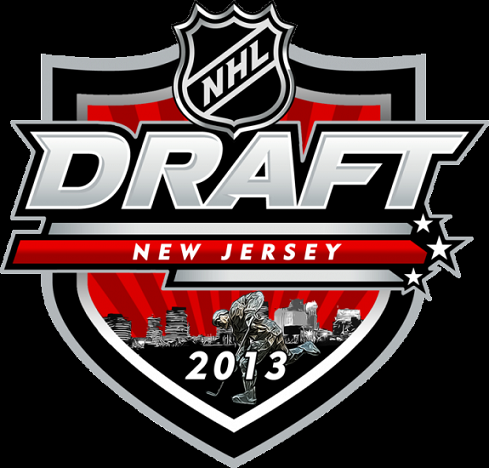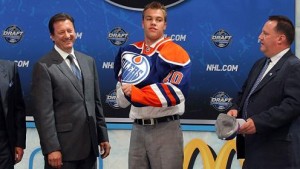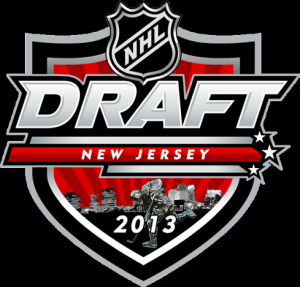Examining possibilities for draft selection order

With only a few games left in this shortened regular season, a few teams are mathematically eliminated from the playoffs, and now the rest of their games don’t matter. If some people had their way, though, that wouldn’t necessarily be true.
When the NHL Entry Draft comes around, do you ever find yourself asking “Why does the team that sucked the most get the biggest reward when draft time comes around?” Whether it’s the Pittsburgh Penguins drafting two of the best players in the world in Sidney Crosby and Evgeni Malkin in back-to-back years (plus a #2 pick prior and a #3 pick after), or the Edmonton Oilers scoring three consecutive first-overall draft picks, it can get pretty frustrating to see a team go from terrible to threatening as a reward for losing (unless you support one of those teams). Some debate has arisen about the merit of the current system and what could be done to improve it, or what entirely new system should take its place.
While the current arrangement has its flaws, is there really a system that could be devised that would certainly be without flaws? No, but we can speculate and develop ideas that might be more efficient than what we currently have. Here are some of ideas:

Source: Oilers.NHL.com / Credit: Dave Sandford/NHLI via Getty Images
Current system: Draft lottery: Currently, all non-playoff teams are ranked (1-14) in order of least points (1) accumulated in the regular season to most (14). Then there’s the draft lottery in which teams ranked 1-14 have a chance to score the #1 pick (as of a recent update to the draft this year), with the worse teams having a much higher chance to win; it goes from 25% to 18% to 14.2%…all the way down to .8% and .5%. So yeah, the 14th-worst team can be expected to draft first overall about…once every 200 years. Playoff teams that don’t make it to the Finals are ranked 15-28 based on regular season points, spot 29 goes to the loser of the Finals, and 30 goes to the Cup winner.
Positives: Inferior teams can get better and become competitive by being awarded high draft picks (unless you’re the Leafs and you trade away your first rounders that ultimately become Tyler Seguin and Douggie Hamilton). Generally, it prevents bad teams from staying in the cellar for too long. Additionally, a superstar prodigy gives teams a player to market and a reason for fans to show up to games.
Negatives: Teams are rewarded for sucking, which encourages them to tank (the art of intentionally putting a bad team on the ice to lose and get a higher pick). It’s a flawed system that encourages bad teams to lose, which can easily be accomplished regardless of how much the players want to win; GMs can trade their aging veterans for picks/prospects and call up a bunch of minor-league scrubs. Teams can stockpile prospects while putting a poor team on the ice, and after a few years, bring those players to the big leagues and put them together with a few free-agent signings, and boom, contenders.
Losers’ Bracket: Earlier in the year, the KHL devised a rough system in which the non-playoff teams (losers) would compete in a tournament for a high pick (possibly the #1 overall pick) as well as a cash prize…some people thought it might be an idea worth looking into, which is the only reason I mention it here.
Positives: Teams control their destiny. There’s no benefit to tanking, which is for what the league should aspire. Non-playoff teams find themselves in a playoff-like situation, which means some excitement for the fans and bonus experience for the players. It can also mean extra revenue for a team.
Negatives: It’s clearly not a good idea. Bad teams will continue to be bad; does a team that won 25 games in the regular season have legitimate odds in a series against teams that have won 35 or 40? Without obtaining a high draft pick, it will be much tougher for them to get better, and they’ll be in the same spot next year. Meanwhile, the mediocre/good teams will dominate the tournaments. It would be more beneficial for a bubble team, such as the New Jersey Devils right now, to miss the playoffs and win the #1 pick instead of being embarrassed in the first round by the Penguins.
Also, players won’t be motivated. In the offseason, a good percentage of struggling teams’ starters sign with a different team, are traded, are sent to the minors, or retire. There’s no reason for them to play for that team’s draft position, a future player that might be their replacement as well. And although there’s the possibility of extra revenue and player experience, it might end up costing teams or the league money if they can’t sell enough tickets or draw enough ratings, and players will wear themselves out and subject themselves to injury almost unnecessarily. It would be hard to find viewers when the real playoffs are going on, even for the teams seriously competing for the #1 pick, and the games probably wouldn’t air nationally anyway.
Points after Elimination (PAE): Now here’s a very innovative idea. In this system, teams are awarded one “PAE” for every point they earn in the actual standings after they are mathematically eliminated from the playoffs. For example, now that the Avs are eliminated, every point they obtain from now until the end of the regular season is one PAE. The non-playoff teams would draft in order of most PAE to least, and playoff teams would be ranked as in the current system.
Positives: Discourages late-season tanking – a huge plus. It gives teams motivation to win even after being eliminated from playoff contention, making every game more competitive, which is better for fans. Bad teams are given the help they need only if they continue compete even after being eliminated.
Negatives: Bubble teams that just miss the playoffs see no reward from trying the entire season, possibly having traded draft picks or prospects at the deadline to make a run. If you’re mathematically eliminated on your last game of the season, you don’t even have the opportunity for fight for a higher draft pick. Plus, teams can still tank early on to have the largest window to accumulate PAEs. Another factor we have to consider, and this applies to all drafting systems, is that it might make the trade deadline pretty uneventful, and although that seems pretty minor, it’s a widely discussed issue for weeks prior until the actual day, which draws huge traffic and stimulating player movement.

Credit: NHL original image
Staggered Odds: This concept, which I made up as far as I know, expands on the league’s recent update to the system in which all non-playoff teams have a chance to earn the #1 pick. However, instead of just determining the #1 pick, the odds affect every team: all teams have a chance to draft anywhere from first to 14th. Think of it like “credit card roulette” or that thing you probably did as a kid where you put your name into a hat and had names randomly drawn. It’s like that, except teams that finish worse have more “names in the hat,” so to speak, giving them staggered odds. Teams are drawn until everyone gets a spot, so every team has a chance to earn that coveted #1 pick as well as the #2, #3, #10, and #14 pick (including the worst team).
Positives: Draft position isn’t necessarily as guaranteed as it is now, where you can drop by only one spot, so tanking isn’t as appealing. Failing to make the playoffs is generally viewed as a failed season, so why shouldn’t all those teams have a chance at a solid pick? Maybe they’re a team on the decline and needing help more so than a bottom-feeder that has been rebuilding over the past few years (i.e. the Oilers). The randomness removes the strategy from trying to lose or trying to win just for draft position, because it doesn’t matter as much where you place, which [hopefully] means less tanking. And still, the weaker teams are very likely to snag a high pick that will help them, even if the last-place team falls to #5 (top-5 picks are usually gamebreakers), and the better teams are a longshot to place high.
Negatives: Struggling teams could get the shaft and go another season of failing to be competitive, while a bubble team on the rise could get extra help by scoring a high pick they don’t necessarily need. The randomness makes it like playing a game of The Wheel of Justice, which can be viewed as unfair.
(Also note that the system could be varied to make only the bottom-five teams have a shot at the #1-5 spot and/or the 6-10 teams having a chance for the #6-10 picks.)
Random: This system cuts out all the politics: all teams that miss the playoffs have an even chance to acquire any position in the draft. It’s like my Staggered Odds system, except every team gets just one name in the hat.
Positives: First and foremost, it removes tanking entirely. There’s not one possible benefit from losing games, so it encourages winning all the time. It won’t affect trade deadline deals because teams would want to acquire as many draft picks as possible. Bad teams aren’t rewarded for losing, but there’s a chance that bad teams get the help they need. Bubble teams also have a chance to get the player they need to become contenders.
Negatives: Teams that legitimately need help (and have made efforts to improve their team) are left on their knees with their hands in the prayer position yelling “COME ON NO WHAMMIES NO WHAMMIES NO WHAMMIES!” Missing the playoffs by one point can be the difference between the #15 pick and the #1 pick, as there’s a 7% chance for every team for every draft spot.
There are, of course, other ramifications to some of these ideas, such as reduced action in free agency, but it’s really difficult to tell exactly how they’ll be affected. And while this article strongly addresses the subject of tanking, it might not necessarily be as big of an issue as it is made out to be, but the principle of the rewards going to the worst teams is essentially synonymous.
So which system seems best? Does one of my crazy ideas sound good? How about the PAE? Or is it fine the way it is? Maybe you have a brilliant idea you’d like to share? Let us know how the league can make everybody happy.

